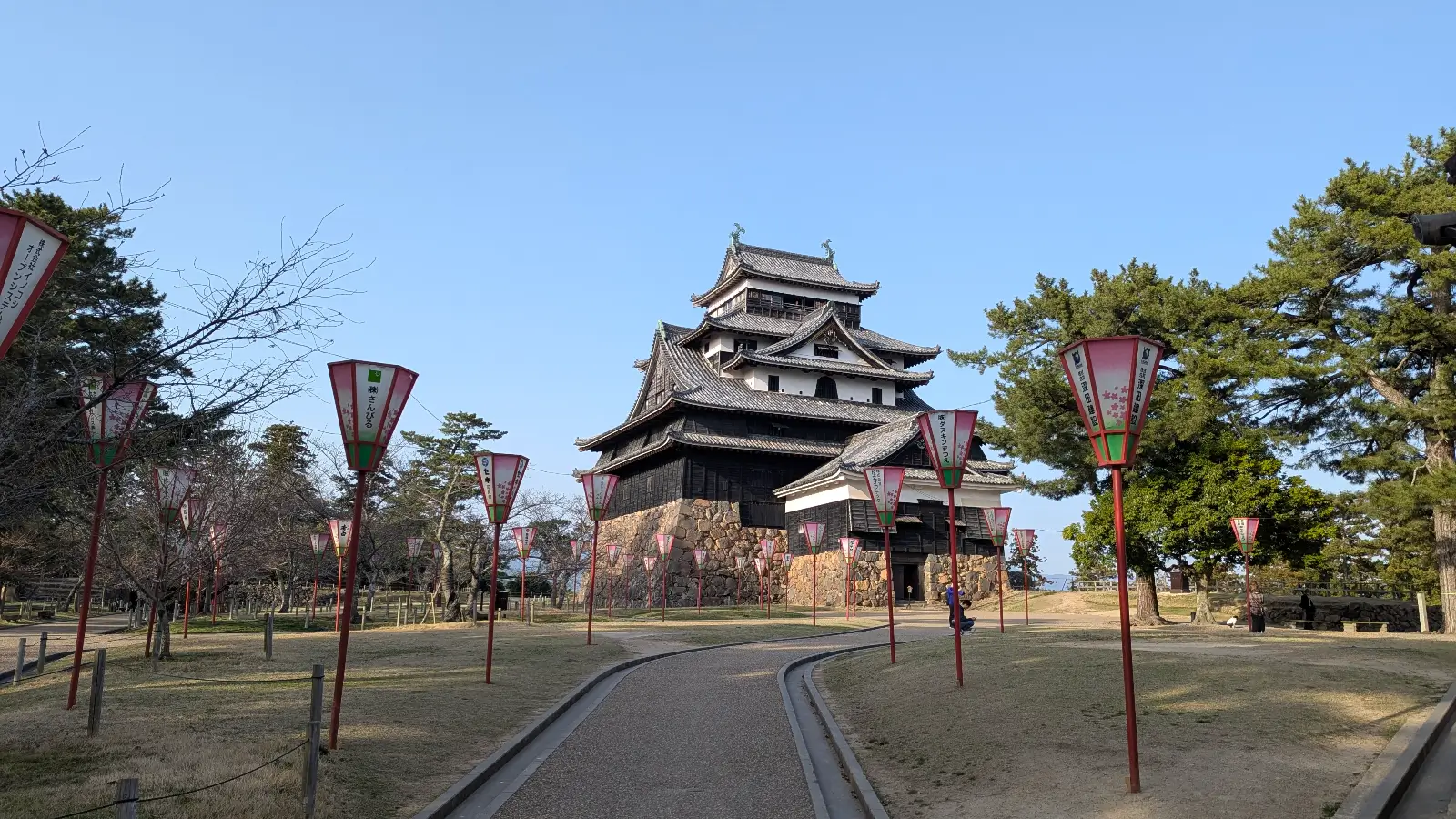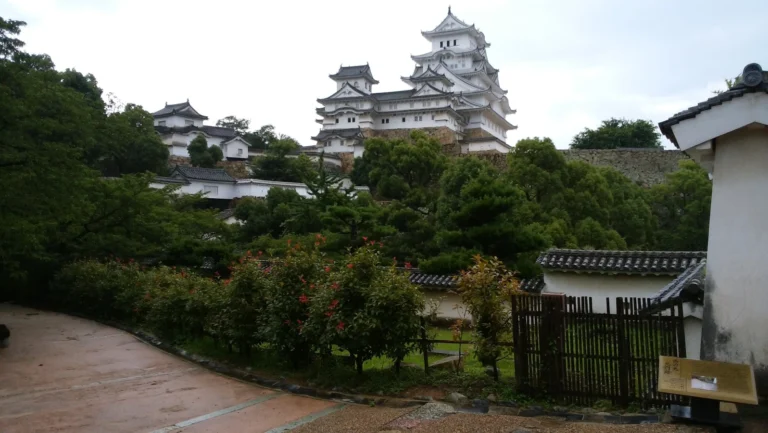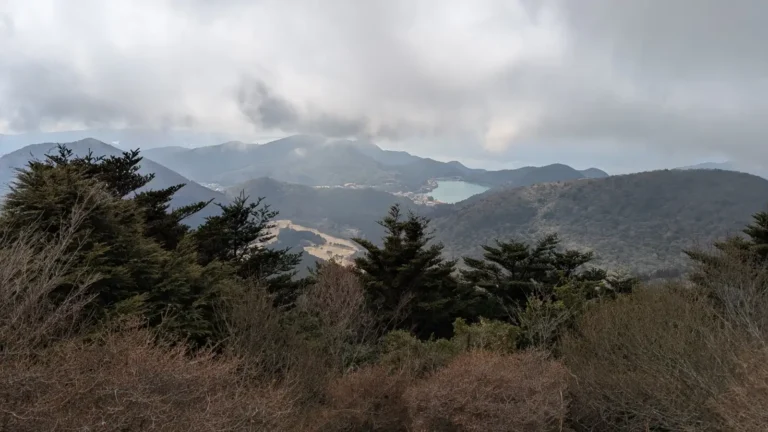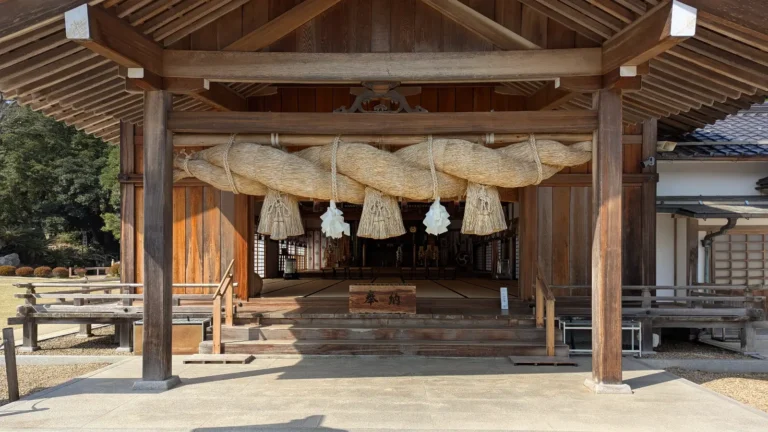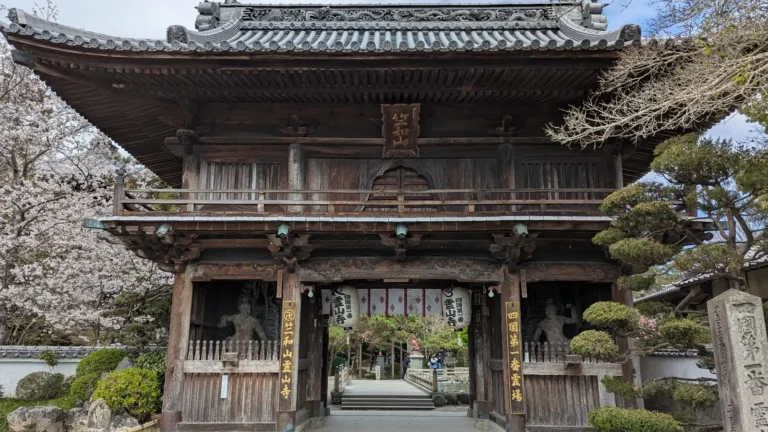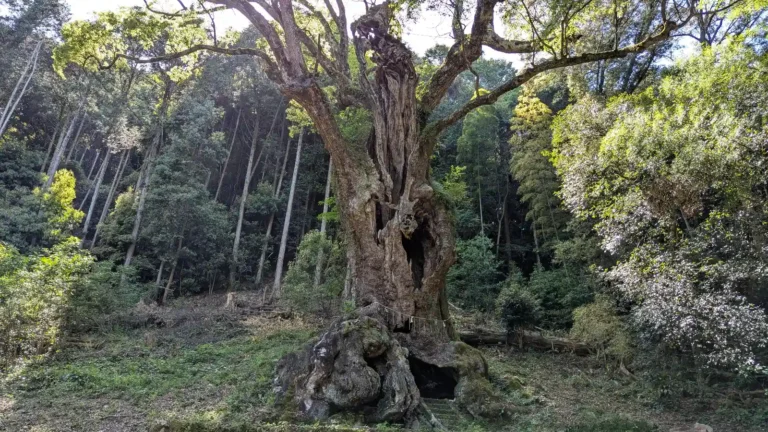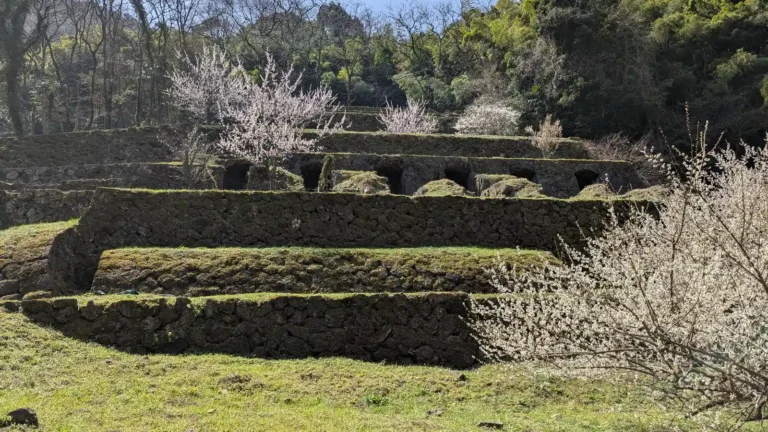Matsue: A JOTM Guide
There’s a stillness to Matsue (松江) that moves. Not the kind that holds you in place, but the kind that draws you deeper, like light over water. You feel it first along the canals, where shadows drift across stone bridges, and again in the lacquered hush of old samurai homes. Matsue Castle rises quietly nearby, its black silhouette watching over the rooftops and the shore of Lake Shinji, where each evening ends in a slow-burn sunset. Somewhere between lake and sky, the town keeps whispering, layered with echoes of Lafcadio Hearn’s legends and the soft presence of those still seeking a travel guide not written in urgency, but in time. You may not come here chasing top sights. But for those wondering about the most enduring things to do in Matsue, you might stay longer than you planned.
Select links in this guide are affiliate links. They help sustain this space… allowing us to share more, with less dependence on advertising.
*Prices are subject to change.
Matsue at a Glance: Town Overview & Quick Facts
- Region: Chugoku (Shimane Prefecture)
- Nearest Major City: Hiroshima
- Type of Destination: Castle Town / Lakeside City / Literary Landmark
- Best Time to Visit:
- Spring (Late March – Mid April): Cherry blossoms around Matsue Castle and along Lake Shinji’s banks.
- Summer (June – August): Lantern-lit canals and evening boat rides offer quiet magic.
- Autumn (Late October – November): Crisp mornings and golden light on the samurai district.
- Winter (December – February): Frosted rooftops and onsen warmth just outside the city.
Why It’s Special in One Sentence:
Matsue is a lakeside retreat where samurai castles, tea culture, and poetic silences linger just beneath the surface of Japan’s still waters.
Why Matsue Is Worth Discovering: Highlights of Matsue’s Atmosphere, Culture, and Lakeside Legacy
- Matsue Castle is one of only a few original wooden castles left in Japan, its black walls rising solemnly above the town, watching over the lake and hills.
- Nicknamed the “City of Water,” Matsue flows gently between Lake Shinji and Nakaumi Lagoon, its canals reflecting not only light, but centuries of life.
- It was here the Irish-Greek writer became Koizumi Yakumo. His house remains, and his ghost stories still echo down the narrow lanes.
- The lake is more than a view, it’s a slow ritual. Each sunset here is a quiet performance, best watched with silence and steamed sweet potato in hand.
- The preserved homes of Matsue’s Bukeyashiki (Samurai District) speak softly of old codes, cedar beams, and generations that once stood guard.
- Matsue opens the way to Izumo Taisha, Yaegaki Shrine, and the myths that shaped Japan’s ancient heartland.
Must-See Wonders at Matsue: Castle Views, Water Paths, and Literary Echoes
Matsue Castle
- One of Japan’s twelve remaining original castles, this black fortress exudes calm strength.
- Climb its wooden interior for sweeping views of the lake, town, and far-off mountains.
- In spring, its base becomes a sea of cherry blossoms, petals drifting into the moat.
Lafcadio Hearn’s Former Residence
- Simple and spare, with slatted light and tatami still holding his presence.
- The garden outside feels like a memory, half-tended, half-dreamed.
- Don’t miss the haunting ink sketches of local yokai inside the nearby museum.
Lake Shinji’s Shoreline and Sunset Spot
- The walkable lakeside promenade is where locals gather to watch day turn gold.
- Statues of the Seven Lucky Gods dot the path, small spiritual anchors against the shifting sky.
- Take a boat ride at dusk, where the lake reflects not only clouds, but old stories.
Bukeyashiki Samurai Residence District
- Quiet lanes of white-walled homes and tiled roofs unfold like a storybook of Edo-era memory.
- Inside, tatami creak beneath your steps, an invitation to slow down.
- Some residences offer matcha and seasonal sweets with views over small inner gardens.
Kyomise District
- Wooden facades, handmade crafts, and a gentle slope toward the castle.
- Try local specialties like shijimi clam soup, pulled fresh from the lake.
- In winter, the town’s rhythm slows even further, ideal for warm drinks and quiet walks.
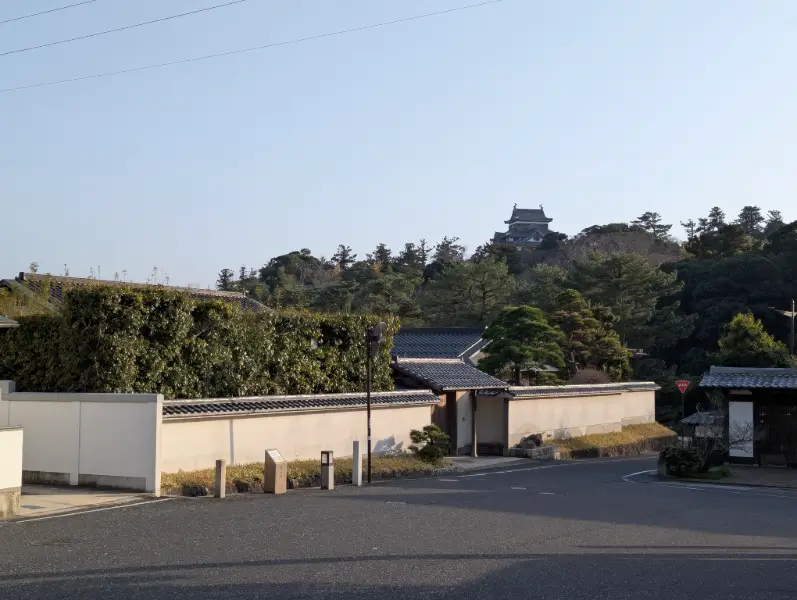
Local Secrets from JOTM: Hidden Tips for Visiting Matsue
- Arrive at Sunset, Stay for Dusk: The golden hour at Lake Shinji isn’t just beautiful, it’s when Matsue reveals its deepest hush.
- Follow Hearn’s Path by Lantern Light: Night walking tours trace the footsteps of the ghost story master. Listen more than you look.
- Skip the Main Road into the Samurai District: Enter from the back streets, where silence and moss meet before you ever see a gate.
- Go in Winter, Not Despite It: Matsue’s cold season strips everything back. The castle feels starker, the skies clearer, the experience more intimate.
- Cross into the Unknown at Yaegaki Shrine: A short drive away, this shrine holds the “Mirror Pond”, where lovers float fortunes across water. It’s quiet, gentle magic.
Nearby Sacred Spaces: Shrines, Onsen, and Temple Walks Near Matsue You Shouldn’t Miss
- Yaegaki Shrine – Beloved for its matchmaking legends and mirror pond. (15 minutes by bus)
- Izumo Taisha – One of Japan’s oldest and most spiritually significant shrines. (45 minutes by train)
- Tamatsukuri Onsen – A hot spring town said to grant beauty and healing. (20 minutes by train or taxi)
- Gesshoji Temple – Quiet cemetery temple surrounded by hydrangeas in early summer. (10 minutes by foot from city center)
Getting to Matsue: How to Access the Town by Train, Bus, or Air
- By Train: Take the JR Yakumo Limited Express from Okayama Station (approx. 2.5 hours) or local San’in Line from Izumo or Yonago. Matsue Station is centrally located.
- By Bus: Direct highway buses run from Hiroshima, Osaka, and Tokyo (overnight). Local buses serve key sites around town and the lake.
- By Air: The nearest airport is Izumo Airport (30 minutes by bus or taxi). Yonago Kitaro Airport is also an option.
For travelers using the Japan Rail Pass, portions of this route may be covered, our guide offers practical insights on when it’s worth considering.
Resting Nearby: Hotels near Matsue
- Onyado Nono Matsue Natural Hot Spring – A serene stay near the station, blending modern comfort with tatami charm and a natural onsen tucked upstairs.
- Ohashikan – A historic riverside ryokan with delicate seasonal meals and views of the Ohashi River, just steps from the heart of the old town.
- Hotel Gyokusen – A refined onsen retreat near Tamatsukuri, ideal for those pairing lakeside exploration with hot spring stillness.
- Hotel Ichibata – A lakeside landmark with large windows that face Lake Shinji’s sunsets, and indoor baths that echo the view.
- Matsue New Urban Hotel – Reliable, relaxed, and walkable to the castle—a practical base with glimpses of the lake and the city’s rhythm.
If you’re planning a broader journey through Japan, our foundational guides offer clarity for every step of the way. Explore Planning a Trip to Japan: A JOTM Guide, learn How to Get Around Japan, and find the Best Time to Visit Japan for a season that resonates with your rhythm.
FAQs and Travel Tips about Matsue: A Few Last Things Before You Go
Planning a visit to Matsue? These essential travel tips and FAQs cover everything from castle access and sunset spots to hidden seasonal highlights.
A: Late March to mid-April brings cherry blossoms around Matsue Castle and Lake Shinji, while late October to November offers crisp air, golden leaves, and quiet lanes in the samurai district.
A: A full day lets you visit the castle, lake, and samurai district, but two nights allow the town’s rhythm to settle in.
A: Matsue is in eastern Shimane Prefecture, between Lake Shinji and Nakaumi Lagoon, about 2.5 hours west of Okayama by train on the JR San’in Line.
A: Matsue is known for Matsue Castle, one of Japan’s last remaining original wooden castles, its lakeside sunsets over Lake Shinji, and the haunting folklore of Lafcadio Hearn.
A: Yes. Matsue is compact and pedestrian-friendly. The castle, lake promenade, and samurai district are all easily explored on foot, with local buses filling in the gaps.
A: Yes. Matsue’s Suigosai Fireworks Festival in early August reflects bursts of color over Lake Shinji, while autumn’s Hōran-enya and lantern events softly illuminate the canals with flickering light.
A: The Lake Shinji promenade is the most popular sunset spot, especially near Shinjiko Ohashi Bridge. For a more serene view, try a lake-facing onsen room at Naniwa Issui or Hotel Ichibata.
A: Yes. Matsue Castle is open year-round, though hours vary slightly by season. Spring and autumn offer the most atmospheric views.
A: Matsue can be done as a day trip from Izumo or Yonago, but staying overnight lets you enjoy sunset at Lake Shinji and the town’s quieter rhythms.

